Education – Deep Thoughts on the ‘WHY?’ of the Human Condition
Education
Education and How To Fix America;
1990 Teacher of The Year Acceptance Speech
Check out John Taylor Gato’s speech in 1990 as he was accepting the New York State Teacher of the Year Award. Almost 30 years ago Gato was bringing out the role of parenting and critical thinking in American education. Some of his ideas are a bit much but it shows the power of the public education system forming our country. (Read it all HERE). Some of the excerpts that jumped out at me include:
Our school crisis is a reflection of this greater social crisis. We seem to have lost our identity. Children and old people are penned up and locked away from the business of the world to a degree without precedent – nobody talks to them anymore and without children and old people mixing in daily life a community has no future and no past, only a continuous present. In fact, the name “community” hardly applies to the way we interact with each other. We live in networks, not communities, and everyone I know is lonely because of that. In some strange way school is a major actor in this tragedy just as it is a major actor in the widening guilt among social classes.
The hunger for community is very pronounced in society today. The community used to take place in churches, in neighborhoods and in civic club and events. As our churches emptied and security concerns keep kids indoors and the role of service fades in our busy society we are seeing a rise in anit-depressants, loneliness, and opioid drug abuse. As humans, we evolved to be social and adapt in groups others to survive. One of my favorite books by Jonathan Haidt, Righteous Mind, explains from an evolutionary point of view why we developed morality.
Here is another curiosity to think about. The homeschooling movement has quietly grown to a size where one and a half million young people are being educated entirely by their own parents. Last month the education press reported the amazing news that children schooled at home seem to be five or even ten years ahead of their formally trained peers in their ability to think.
And if you take the references of Televisions and shift them to ‘screen time’ to encompass the games and phones in a child’s life, this quote, again from 30 years ago, starts getting really scary;
Two institutions at present control our children’s lives – television and schooling, in that order. Both of these reduce the real world of wisdom, fortitude, temperance, and justice to a never-ending, non-stopping abstraction. In centuries past the time of a child and adolescent would be occupied in real work, real charity, real adventures, and the realistic search for mentors who might teach what you really wanted to learn. A great deal of time was spent in community pursuits, practicing affection, meeting and studying every level of the community, learning how to make a home, and dozens of other tasks necessary to become a whole man or woman.
But here is the calculus of time the children I teach must deal with:
Out of the 168 hours in each week, my children sleep 56. That leaves them 112 hours a week out of which to fashion a self.
My children watch 55 hours of television a week according to recent reports. That leaves them 57 hours a week in which to grow up.
My children attend school 30 hours a week, use about 6 hours getting ready, going and coming home, and spend an average of 7 hours a week in homework – a total of 45 hours. During that time, they are under constant surveillance, have no private time or private space, and are disciplined if they try to assert individuality in the use of time or space. That leaves 12 hours a week out of which to create a unique consciousness. Of course, my kids eat, and that takes some time – not much, because they’ve lost the tradition of family dining, but if we allot 3 hours a week to evening meals, we arrive at a net amount of private time for each child of 9 hours.
It’s not enough. It’s not enough, is it? The richer the kid, or course, the less television he watches but the rich kid’s time is just as narrowly proscribed by a somewhat broader catalog of commercial entertainments and his inevitable assignment to a series of private lessons in areas seldom of his actual choice.
And these things are oddly enough just a more cosmetic way to create dependent human beings, unable to fill their own hours, unable to initiate lines of meaning to give substance and pleasure to their existence. It’s a national disease, this dependency and aimlessness, and I think schooling and television and lessons – the entire Chautauqua idea – has a lot to do with it.
Think of the things that are killing us as a nation – narcotic drugs, brainless competition, recreational sex, the pornography of violence, gambling, alcohol, and the worst pornography of all – lives devoted to buying things, accumulation as a philosophy – all of them are addictions of dependent personalities, and that is what our brand of schooling must inevitably produce.
And what do we do to correct the problem:
It’s high time we looked backwards to regain an educational philosophy that works. One I like particularly well has been a favorite of the ruling classes of Europe for thousands of years. I use as much of it as I can manage in my own teaching, as much, that is, as I can get away with given the present institution of compulsory schooling. I think it works just as well for poor children as for rich ones.
At the core of this elite system of education is the belief that self-knowledge is the only basis of true knowledge. Everywhere in this system, at every age, you will find arrangements to place the child alone in an unguided setting with a problem to solve. Sometimes the problem is fraught with great risks, such as the problem of galloping a horse or making it jump, but that, of course, is a problem successfully solved by thousands of elite children before the age of ten. Can you imagine anyone who had mastered such a challenge ever lacking confidence in his ability to do anything? Sometimes the problem is the problem of mastering solitude, as Thoreau did at Walden Pond, or Einstein did in the Swiss customs house.
Independent study, community service, adventures in experience, large doses of privacy and solitude, a thousand different apprenticeships, the one day variety or longer – these are all powerful, cheap and effective ways to start a real reform of schooling. But no large-scale reform is ever going to work to repair our damaged children and our damaged society until we force the idea of “school” open – to include family as the main engine of education.
There you have it. Family, experience, time to think, apprenticeship, a study of history…and on and on. All pretty basic and pretty cheap stuff to fix our nation.
For more on the state of education and our countries future, I caught an interview done by AEI with a panel of military retired Generals and Admirals. (Military Readiness and Early Childhood; What’s The Link?)
Gatto has similar beliefs in the future of work and the skills needed for a future society as Seth Godin in his book Linchpin. When I read it my ideas of what children need to prepare themselves for the future shifted. It’s not the value of writing a five paragraph essay or understanding the Pythagorean theorem, instead, the skills needed for tomorrow have to do with critical thinking, values and virtues and a heavy dose of Grit (Angela Duckworth -Grit)
(Ethos3) For years there has been only two teams in the workforce: management and labor. Godin proposes that a third team now exists: the linchpin.
A linchpin does not need a map to follow. A linchpin creates opportunity and vision without a manual.
The linchpin brings humanity, connection and art to work everyday.
Every person has the potential to bring his or her humanity and artistry to work, and become a linchpin.
Godin proposes that part of the human brain, the amygdala, resists anything that seems risky or dangerous, including being bold in business. The amygdala is the reason that there are not more linchpins.
Godin’s list of what makes a linchpin indispensable:
- Providing a unique interface between members of the organization
- Delivering unique creativity
- Managing a situation of great complexity
- Leading customers
- Inspiring staff
- Providing deep domain knowledge
- Possessing a unique talent
The role of the Liberal Arts in Education.
Epstein and Ferguson explain how a well-rounded education. In this day and age of transition, I believe our education system needs to adapt to focusing on generalist, critical thinkers.
Dear Tech World, STEMism is Hurting Us
In a blistering assault on the value of the liberal arts many months ago, former Sun Microsystem CEO Vinod Khoshla offered anything but nuance in his opening indictment: “Little of the material taught in Liberal Arts programs today is relevant to the future.”
The rest of his article is a tirade against majoring in the liberal arts.
However, Khoshla’s own field, tech, is full of people who’ve devoted their university days to the liberal arts:
- Susan Wojcicki (CEO of YouTube) majored in history
- Reid Hoffman (founder of Linkedin) majored in philosophy
- Stewart Butterfield (CEO of Slack) majored in philosophy
- Alexa Hirschfeld (cofounder of Paperless Post) majored in Classics
- Parker Harris (cofounder of Salesforce) majored in English Literature
- Jack Ma (cofounder of Alibaba) majored in English….
…
Steve Jobs understood the advantage of incorporating fields that focus on pushing the boundaries of human knowledge. His obsession with beautiful fonts stemmed from a course on calligraphy at Reed College. As he once said, “it’s in Apple’s DNA that technology alone is not enough — that it’s technology married with liberal arts, married with the humanities, that yields us the result that makes our hearts sing.”
Our world overflows with talented minds that have achieved entrepreneurial success aided by a value for visual aesthetics and trained in literature, history, and philosophy. This is not news for the business and tech world. Yet whenever STEM evangelists in tech preach the gospel of STEM, they inevitably trash the “soft disciplines.”…
A company comprised of people with HEAT backgrounds will produce diversity of thought — the yeast of innovative thinking. Training in psychology, anthropology, art, literature, history, philosophy, Classics, and journalism are skills that will advance innovative and creative thinking in an organization.
Scott Hartley articulates not just the value of the humanities in the tech world but the vital role the liberal arts will play in its future:
“When we talk about ‘software eating the world,’ there’s a flipside to that. Software is touching every aspect of our lives, which in turn means that we require more diversity of thought, passion, and methodology to apply that tech meaningfully to the biggest problems we face. Code is necessary, but not sufficient. Lost in the drumbeat of STEM is the human context.”
Thomas Sowell – Vulgar Pride of Intellectuals
The Value of Work – Blue Collar America
In America, there’s an assumption that the most meaningful careers are found in office buildings, among those taking part in the information economy rather than in the nitty gritty of blue collar trades. To be eligible for these desirable white collar jobs, you need to take out tens of thousands of dollars in student loans so you can go to college for 4 years to get a degree. The sacrifice is always worth it though, or so we’re told.
Dismantling America – Thomas Sowell
For the person who lives a virtuous life, of steadfastness and good judgment, happiness is always within reach
Seneca wrote a number of tragedies that directly inspired William Shakespeare, but was also one of the main exponents of the Stoic school of philosophy, which has made a surprising comeback in recent years. Stoicism teaches us that the highest good in life is the pursuit of the four cardinal virtues of practical wisdom, temperance, justice and courage – because they are the only things that always do us good and can never be used for ill. It also tells us that the key to a serene life is the realization that some things are under our control and others are not: under our control are our values, our judgments, and the actions we choose to perform. Everything else lies outside of our control, and we should focus our attention and efforts only on the first category.
Yep. Teach, study and learn the above and good things will happen.
School Choice
Listen to this discussion by Eva Moskowitz, the CEO and leader of Success Academy Charter Schools. I knew of the NY charter network and their high results but after listening to Moskowitz’ journey to believe that school choice was the solution to failing schools I have a deeper appreciation for her work. Eva started out as a NY City Councilperson and made it her mission to improve outcomes in public schools. After run-ins with the teacher’s unions, she embarked on building out the Success Academy network. A dozen years later, her system has 40+ schools with thousands of kids receiving a top-notch education. Give the lecture a listen;
What’s The Cost-Benefit Of A College Degree Today?
A friend of mine, Frank Antenori weigh in;
Elitists, crybabies and junky degrees
… Washington Post – November 25, 2017
Antenori said many young people would be better off attending more affordable two-year community colleges that teach useful skills and turn out firefighters, electricians and others. Obama promoted that same idea, launching new efforts to boost community college and workplace training. But Antenori said he believes Obama pushed young people too hard toward four-year degrees.
“The establishment has created this thing that if you don’t go to college, you’re somehow not equal to someone else who did,” Antenori said, sitting with his wife, Lesley, at the dining room table in their modest one-story ranch house.
Antenori said when he was in high school in the 1980s, students were directed toward college or vocational training depending on their abilities.
“The mind-set now is that everybody is going to be a doctor,” he said. “Instead of telling a kid whose art sucks, ‘You’re a crappy artist,’ they say, ‘Go follow your dream.’ ”
The Antenoris did not steer their two sons, 23 and 22, toward college, and neither went. One helps at home on the ranch, and the other is enlisted in the Army.
Antenori is just as happy his sons aren’t hanging out with the “weirdos” he reads about on Campus Reform, a conservative website with a network of college reporters whose stated mission is to expose “liberal bias and abuse on America’s campuses.”
In a sign of the intensely partisan climate on campus, its recent headlines include: “Prof wants ‘body size’ added to diversity curricula,” “Students cover free speech wall with vulgar anti-Trump graffiti” and “College Dems leader resigns after declaring hatred of white men.”
The federal government spends $30 billion a year on Pell grants, which help lower-income students, including a large number of minorities, attend college. But studies show that half of Pell grant recipients drop out before earning a degree.
The overall college dropout rate is also high. Only 59 percent of students who start at four-year institutions graduate within six years, according to the National Center for Education Statistics. That leaves millions with debt but no degree.
More than 44 million Americans are paying off student loans, including a growing number of people over 60, according to the Federal Reserve. The average student loan debt of a 2016 college graduate was $37,000. At $1.4 trillion, U.S. student loan debt is now larger than credit card debt.
Antenori said taxpayers should help pay only for degrees, such as those in engineering, medicine or law, that lead directly to jobs. If a student wants to study art or get a “junky” degree in “diversity studies or culture studies,” they should go to a private school, he said.
And he said dropouts who have received government aid should pay it back: “That would be awesome,” he said, flashing a big smile.
“You want to create someone who’s going to be a contributor, not a moocher,” Antenori said. “Go out and generate revenue; that’s what it’s all about.”
David McCullough is one of the best storytellers of all time. (60 Minutes – Journey Through History) Jump up to about 30:00 to this lecture to hear about the power of education and the type of education I believe in.
I work in a Classical school. The foundation of the curriculum and the pedagogy is history told through great literature. Why do I think this is one of the best ways to learn about life is capsulated in this clip.
‘This is how the world is….this is how you should behave in it.’ The power of story, the power of literature.
Quotes:
The problem is that our culture has engaged in a Faustian bargain, in which we trade our genius and artistry for apparent stability.


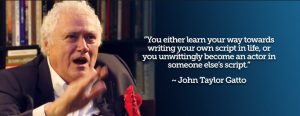



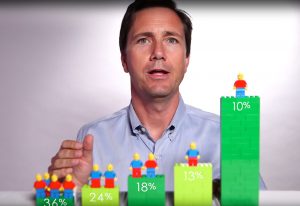 You’re seeing economists on the left, right, and center talk a lot about housing now. Could you get into that?
You’re seeing economists on the left, right, and center talk a lot about housing now. Could you get into that?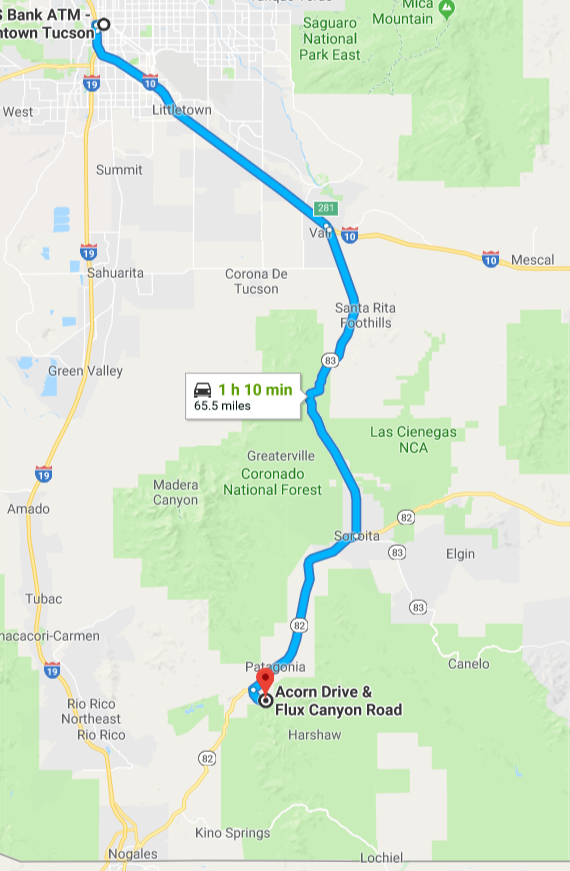
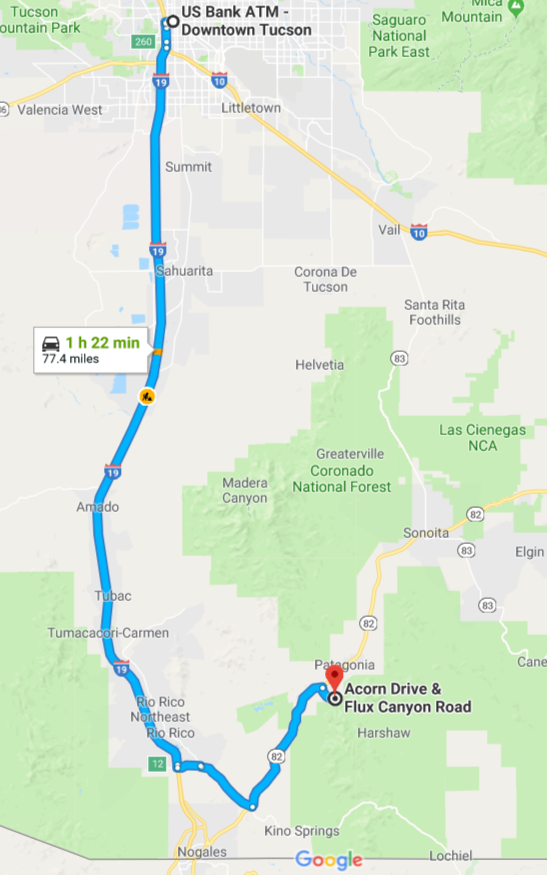



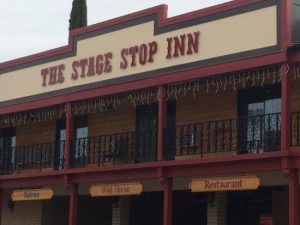





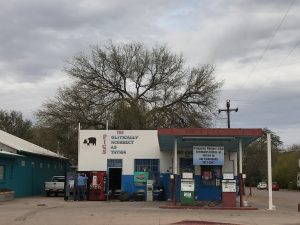
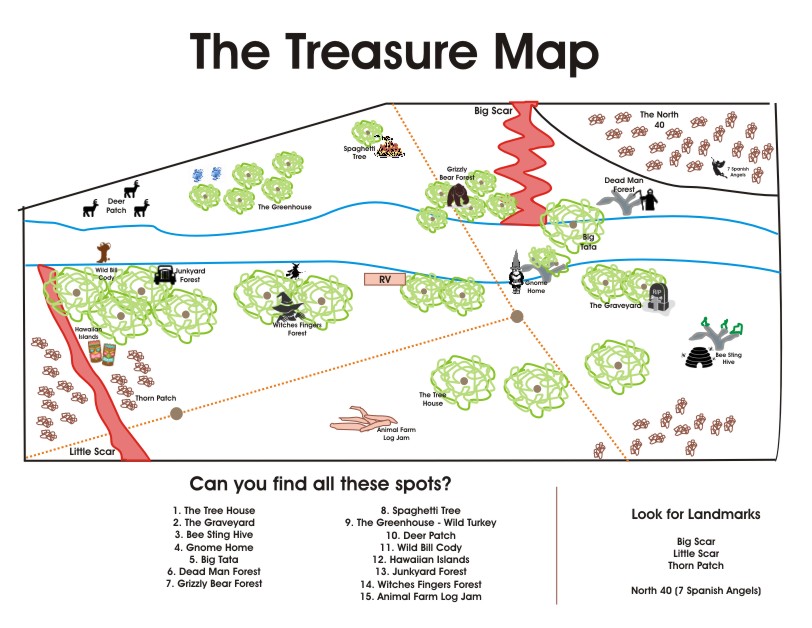

 (from
(from 
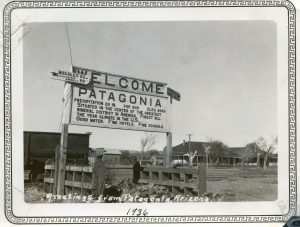
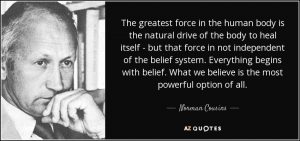 From the
From the 
 There is a proposed mine set to open up on top of Harshaw Rd and the forest service access to Flux Canyon. There are people on both sides of the issue. Wildcat Mining has drilled over 176 exploratory holes around an old Asarco mine. They found huge supplies of silver among other things and are planning on doing an underground mining operation. The impact on traffic and water have been a big debate in the Patagonia area. Mining has been going on in the Patagonia mountains and
There is a proposed mine set to open up on top of Harshaw Rd and the forest service access to Flux Canyon. There are people on both sides of the issue. Wildcat Mining has drilled over 176 exploratory holes around an old Asarco mine. They found huge supplies of silver among other things and are planning on doing an underground mining operation. The impact on traffic and water have been a big debate in the Patagonia area. Mining has been going on in the Patagonia mountains and 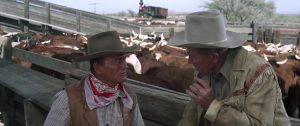 There have been a number of films shot in and around Patagonia. Some of these include:
There have been a number of films shot in and around Patagonia. Some of these include: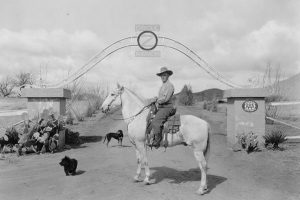 The Circle Z Ranch, which started as a sheep-herding operation in the 1880’s, was developed as a dude ranch in the 1920’s. It is the oldest continuously operating dude ranch in Arizona.
The Circle Z Ranch, which started as a sheep-herding operation in the 1880’s, was developed as a dude ranch in the 1920’s. It is the oldest continuously operating dude ranch in Arizona.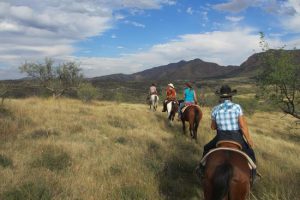 Then the Depression arrived, as did the drought, and the picnics were discontinued in 1934. Today, we scratch our heads in wonder about how all of it was accomplished without today’s conveniences.
Then the Depression arrived, as did the drought, and the picnics were discontinued in 1934. Today, we scratch our heads in wonder about how all of it was accomplished without today’s conveniences.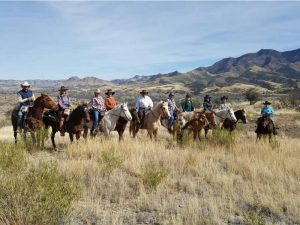 World War II put a crimp in the resort and travel business, and the Circle Z ended up changing hands several times. In 1949 Fred Fendig came from Chicago and purchased the Circle Z. He was the owner-manager for the next 25 years. In 1952 the centrally located main ranch house with its two beautiful living rooms and large dining room burned to the ground. The Zinsmeister house was taken over and became the lodge in that year.
World War II put a crimp in the resort and travel business, and the Circle Z ended up changing hands several times. In 1949 Fred Fendig came from Chicago and purchased the Circle Z. He was the owner-manager for the next 25 years. In 1952 the centrally located main ranch house with its two beautiful living rooms and large dining room burned to the ground. The Zinsmeister house was taken over and became the lodge in that year.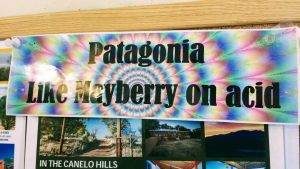
 (
(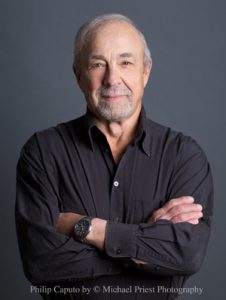 Caputo has won 10 journalistic and literary awards, including the Pulitzer Prize in 1972 (shared for team investigative reporting on vote fraud in Chicago), the Overseas Press Club Award in 1973, the Sidney Hillman Foundation award in 1977 (for A Rumor of War), the Connecticut Book Award in 2006, and the Literary Lights Award in 2007. His first novel, Horn of Africa, was a National Book Award fin
Caputo has won 10 journalistic and literary awards, including the Pulitzer Prize in 1972 (shared for team investigative reporting on vote fraud in Chicago), the Overseas Press Club Award in 1973, the Sidney Hillman Foundation award in 1977 (for A Rumor of War), the Connecticut Book Award in 2006, and the Literary Lights Award in 2007. His first novel, Horn of Africa, was a National Book Award fin alist in 1980, and his 2007 essay on illegal immigration won the Blackford Prize for nonfiction from the University of Virginia.
alist in 1980, and his 2007 essay on illegal immigration won the Blackford Prize for nonfiction from the University of Virginia.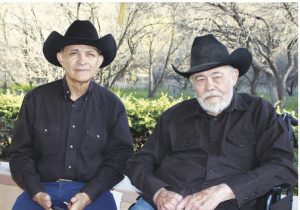 (
(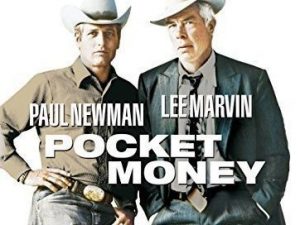 es into a family of ranchers, he is related to many of the founding settlers of the region.
es into a family of ranchers, he is related to many of the founding settlers of the region. “A democracy cannot exist as a permanent form of government. It can only exist until the voters discover they can vote themselves largesse from the public treasury. From that moment on, the majority always votes for the candidates promising them the most benefits from the public treasury, with the result that a democracy always collapses over a loss of fiscal responsibility, always followed by a dictatorship. The average of the world’s great civilizations before they decline has been 200 years. These nations have progressed in this sequence:
“A democracy cannot exist as a permanent form of government. It can only exist until the voters discover they can vote themselves largesse from the public treasury. From that moment on, the majority always votes for the candidates promising them the most benefits from the public treasury, with the result that a democracy always collapses over a loss of fiscal responsibility, always followed by a dictatorship. The average of the world’s great civilizations before they decline has been 200 years. These nations have progressed in this sequence: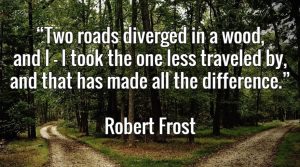
 When you look at the decline of other great societies there are historic clues that don’t always line up perfectly with the arguments I put forth in this book but there are definitely patterns that should scare you and make you take notice.
When you look at the decline of other great societies there are historic clues that don’t always line up perfectly with the arguments I put forth in this book but there are definitely patterns that should scare you and make you take notice. 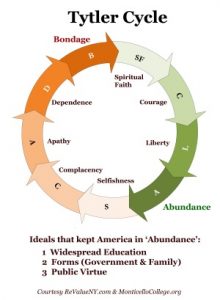 roaring 20’s, industrial revolution, post WWII economic booms on through to the rise of the counter culture, hippies, free love and into the rise of illicit drug use through the cocaine and crack 80’s and 90’s. The final stages we are now living include lack of trust in our governmental institutions from Congress to your local school district, the rise of the entitlement state and the ‘selfie generation’ who ask ‘what is my government going to do for me?’
roaring 20’s, industrial revolution, post WWII economic booms on through to the rise of the counter culture, hippies, free love and into the rise of illicit drug use through the cocaine and crack 80’s and 90’s. The final stages we are now living include lack of trust in our governmental institutions from Congress to your local school district, the rise of the entitlement state and the ‘selfie generation’ who ask ‘what is my government going to do for me?’
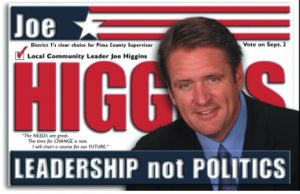 position and challenge a 16 year incumbent in the Republican Primary. I did not win but after much sole searching the race for office wasn’t’ about winning, it was about making my community better. As a candidate I did a number of local radio interviews. After the election, I was given the opportunity to co-host a morning radio show with Chris DeSimone. Our show expanded into 2 hours per day on morning drive time. After six years of probably the most fascinating time to have a ring side seat to State and national politics I started seeing patterns. I wrote them down, researched these patterns form a historical perspective, dug into stats and data to identify trends and project how these patterns would play out in our economy, our political system and in our culture. The patterns were developed into 12 categories that I put forth to show the decline of the American empire.
position and challenge a 16 year incumbent in the Republican Primary. I did not win but after much sole searching the race for office wasn’t’ about winning, it was about making my community better. As a candidate I did a number of local radio interviews. After the election, I was given the opportunity to co-host a morning radio show with Chris DeSimone. Our show expanded into 2 hours per day on morning drive time. After six years of probably the most fascinating time to have a ring side seat to State and national politics I started seeing patterns. I wrote them down, researched these patterns form a historical perspective, dug into stats and data to identify trends and project how these patterns would play out in our economy, our political system and in our culture. The patterns were developed into 12 categories that I put forth to show the decline of the American empire.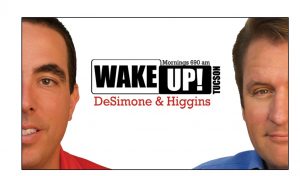 Each chapter of this book is dedicated to one of these arguments that I put forth demonstrate that America is on a trend that leads to only one conclusion. According to Tytler’s assessment our society is moving from Apathy and Dependency to Dependency and Bondage. You may disagree with a particular chapter but I encourage you to analyze my arguments in their entirety. I have no agenda, I am not selling any financial instruments to hedge against where I see our county going. I am simply putting forth where I see America heading and ask you to prepare, become aware and watch for future signs. I have no crystal ball as to when or how long the decline will take. We may stay in the Apathy and Dependence phase for decades. A jolt to the financial system that stops credit financing of American debt could move us to Dependency and Bondage overnight.
Each chapter of this book is dedicated to one of these arguments that I put forth demonstrate that America is on a trend that leads to only one conclusion. According to Tytler’s assessment our society is moving from Apathy and Dependency to Dependency and Bondage. You may disagree with a particular chapter but I encourage you to analyze my arguments in their entirety. I have no agenda, I am not selling any financial instruments to hedge against where I see our county going. I am simply putting forth where I see America heading and ask you to prepare, become aware and watch for future signs. I have no crystal ball as to when or how long the decline will take. We may stay in the Apathy and Dependence phase for decades. A jolt to the financial system that stops credit financing of American debt could move us to Dependency and Bondage overnight.